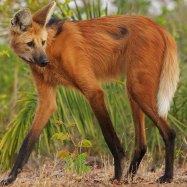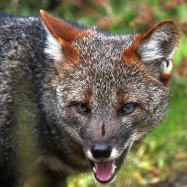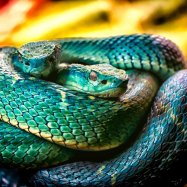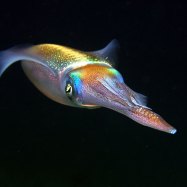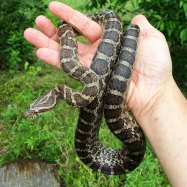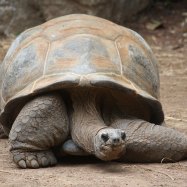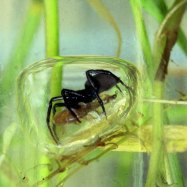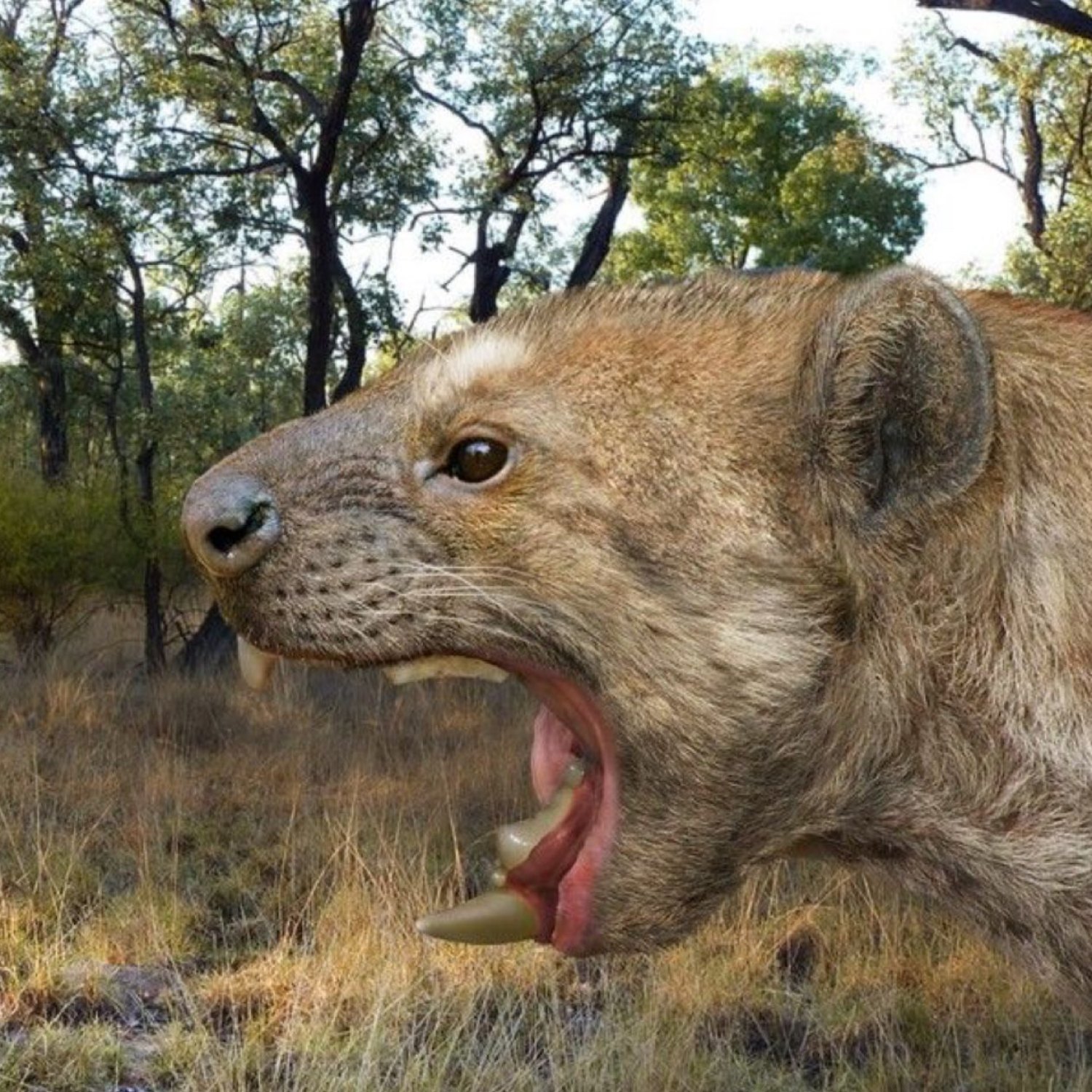
Thylacoleo Carnifex
100 to 130 cm
Thylacoleo Carnifex, also known as the Marsupial Lion, roamed the Australian landscape over 50,000 years ago. With a cat-like body shape and sharp slicing teeth, they were fierce predators measuring 100 to 130 cm in length. Fossil remains found in different sites give us a glimpse into the life of this interesting animal from the Thylacoleonidae family.
Animal Details Summary:
Common Name: Marsupial Lion
Kingdom: Animalia
Habitat: Woodlands and Rainforests
The Mighty Thylacoleo Carnifex: The Fierce Marsupial Lion of Australia
Nature has a way of surprising us with its creations, and one such creation is the Thylacoleo Carnifex, commonly known as the Marsupial Lion. This fascinating and extinct animal, hailing from the land of Australia, has captured the imagination of many for its unique features and characteristics. Let's take a closer look at this incredible creature and uncover all that makes it a true marvel of the animal kingdom.The Thylacoleo Carnifex belongs to the kingdom Animalia, phylum Chordata, class Mammalia, and order Diprotodontia Thylacoleo Carnifex. Its scientific name comes from the Greek words "thylakos" meaning pouch and "leōn" meaning lion, while "carnifex" means 'butcher' or 'executioner' in Latin - a name fitting for this fierce and skilled predator.
Habitat and Distribution
The Thylacoleo Carnifex inhabited the woodlands and rainforests of Australia, making it the largest meat-eating mammal in Australia during its time. Its remains have been found in various sites across Australia, such as Riversleigh in Queensland, Wellington Caves in New South Wales, and Naracoorte Caves in South Australia.Feeding Method
As its name suggests, the Thylacoleo Carnifex was a carnivorous animal that preyed upon other animals for its survival. Its sharp and powerful teeth, along with its robust jaws, made it a formidable hunter, capable of taking down large prey like kangaroos and even small to medium-sized diprotodons. Its specialized teeth were designed to grip and slice through meat, allowing it to consume its prey with relative ease.Physical Characteristics
The Thylacoleo Carnifex had a body shape resembling that of a big cat, with muscular legs, a short thick neck, and a long tail. It was approximately 100 to 130 cm in length, making it a medium-sized animal. Its body was covered in short fur, ranging in color from golden-brown to red-brown, giving it a striking appearance Tarsier.But perhaps the most unique physical characteristic of the Thylacoleo Carnifex was its pouch, which it used to carry and nurture its young. This pouch was located between its hind legs, similar to that of modern-day marsupials. This feature, along with its sharp teeth and cat-like appearance, set it apart from other animals of its time.
Extinction
The Thylacoleo Carnifex existed during the Pleistocene epoch, which ended around 11,700 years ago. While the exact cause of its extinction is still not known, it is believed that it could have been due to a combination of factors, including habitat loss and competition with other carnivorous animals, such as the newly arrived humans.Significance and Research
The Thylacoleo Carnifex has played a vital role in understanding the evolution of marsupials in Australia. Its presence also sheds light on Australia's diverse and unique ecosystem, highlighting the country's rich biodiversity and complex natural history.The discovery of this ancient mammal has also sparked extensive research and study, with scientists and researchers uncovering various aspects of its life and habits. Fossil remains and anatomical studies have given us insights into its diet, habitat, and behavior, providing a glimpse into the life of this extraordinary animal.
Conclusion
In conclusion, the Thylacoleo Carnifex, or the Marsupial Lion, was an extraordinary animal that roamed the woodlands and rainforests of Australia thousands of years ago. With its unique physical characteristics, specialized teeth, and powerful hunting skills, it was a formidable predator that left a mark on the country's natural history. Today, its presence serves as a reminder of the diverse and fascinating creatures that have inhabited our planet throughout millions of years of evolution.

Thylacoleo Carnifex
Animal Details Thylacoleo Carnifex - Scientific Name: Thylacoleo Carnifex
- Category: Animals T
- Scientific Name: Thylacoleo Carnifex
- Common Name: Marsupial Lion
- Kingdom: Animalia
- Phylum: Chordata
- Class: Mammalia
- Order: Diprotodontia
- Family: Thylacoleonidae
- Habitat: Woodlands and Rainforests
- Feeding Method: Carnivorous
- Geographical Distribution: Australia
- Country of Origin: Australia
- Location: Fossil remains found in various sites across Australia
- Animal Coloration: Golden-brown to red-brown
- Body Shape: Cat-like
- Length: 100 to 130 cm
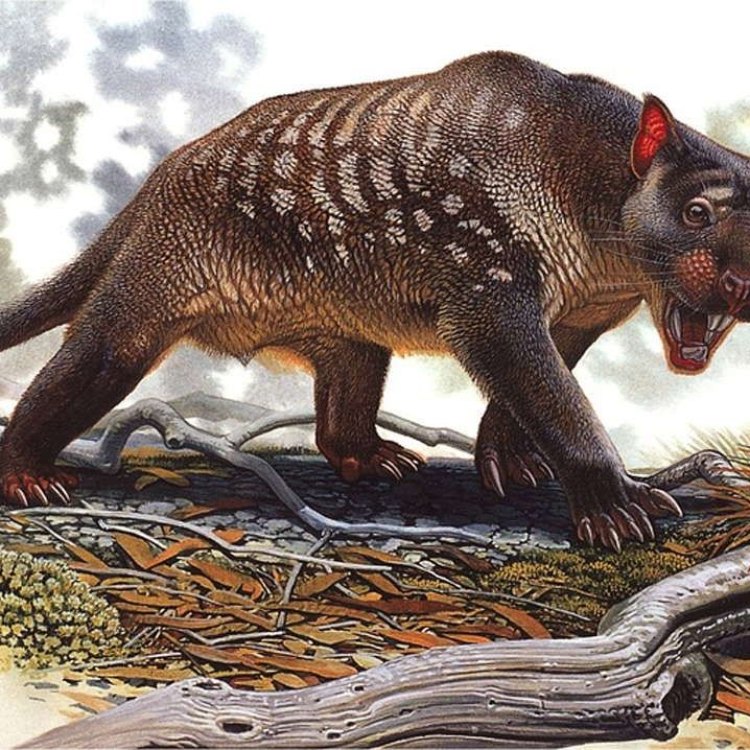
Marsupial Lion
- Adult Size: Similar to a large dog
- Average Lifespan: Unknown
- Reproduction: Marsupial
- Reproductive Behavior: Unknown
- Sound or Call: Unknown
- Migration Pattern: Non-migratory
- Social Groups: Solitary
- Behavior: Ambush predator
- Threats: Habitat loss, climate change
- Conservation Status: Extinct
- Impact on Ecosystem: Top predator
- Human Use: None
- Distinctive Features: Powerful forelimbs with sickle-shaped claws, large shearing teeth
- Interesting Facts: Thylacoleo Carnifex had one of the strongest bite forces of any mammal species
- Predator: None

Thylacoleo Carnifex
The Fascinating Story of Thylacoleo Carnifex: The Extinct Ambush Predator
In the animal kingdom, there have been many unique and fascinating species that have roamed the Earth. However, there are some that stand out for their distinct features and behavior. One of these intriguing creatures is Thylacoleo Carnifex, an ancient marsupial predator that is sadly no longer with us. In this article, we will explore the captivating story of this extinct animal and learn about its interesting characteristics and role in the ecosystem PeaceOfAnimals.Com.Thylacoleo Carnifex, also known as the "killer pouched lion," was a large mammal that lived in Australia during the Pleistocene epoch, around 2 million years ago. One of the most distinctive features of this animal was its size, which was similar to that of a large dog. However, do not let its small size fool you, as Thylacoleo Carnifex was a fearsome predator that held its own against larger animals.
Unfortunately, not much is known about the average lifespan of Thylacoleo Carnifex, as the species is now extinct, and no living specimens exist. However, it is believed that they lived for an extended period, similar to other large mammals. What we do know is that they were marsupials, meaning they gave birth to underdeveloped young and nurtured them in their pouches.
Interestingly, not much is known about the reproductive behavior of Thylacoleo Carnifex. As solitary animals, it is believed that they did not engage in any social or reproductive behavior, and likely mated when the opportunity presented itself. However, more research is needed to confirm these theories Tiffany.
Another aspect of Thylacoleo Carnifex that remains a mystery is their sound or call. This is primarily due to the lack of living specimens and the fact that no recordings of their calls were ever made. It is possible that they had a similar call to other marsupials, but we may never know for sure.
One thing that is certain, however, is that they were non-migratory animals. They were not known to move long distances, and it is believed they stayed in the same area throughout their lifetime. As solitary animals, they did not need to migrate to find a mate or food, unlike other species.
Speaking of social behavior, Thylacoleo Carnifex was a solitary animal, meaning they preferred to live and hunt on their own. This behavior was probably due to their role as an ambush predator, where they would hide and wait for their prey before making a sudden and deadly attack. Their solitary lifestyle also ensured that they did not have to compete for food with other predators, making them successful hunters.
As an ambush predator, Thylacoleo Carnifex had developed specialized hunting techniques and adaptations to ensure their survival. One of the most distinctive features of this animal was their powerful forelimbs, which were equipped with sickle-shaped claws. These claws were essential for climbing and holding onto their prey, ensuring a successful ambush.
Apart from their strong forelimbs, Thylacoleo Carnifex also had large shearing teeth that were used for cutting through flesh and crushing bones. These teeth were incredibly efficient, and it is believed that the species had one of the strongest bite forces of any mammal species. This feature allowed them to hunt and kill larger animals than their size would suggest.
However, despite being an apex predator, Thylacoleo Carnifex faced several threats, which ultimately led to their extinction. One of the main threats was habitat loss, as human settlement and expansion caused significant changes to the environment, making it unsuitable for the species to survive. Additionally, climate change also played a role in their decline, as it affected the availability of resources and disturbed the balance of the ecosystem.
Sadly, the impact of Thylacoleo Carnifex's extinction is still felt today. As a top predator, their presence was crucial in maintaining the balance of the ecosystem. With their loss, the population of their prey species increased, leading to overgrazing and other negative consequences. This highlights the crucial role that each species plays in an ecosystem, and how the loss of one can have a ripple effect on the entire environment.
Despite the lack of human use or impact, Thylacoleo Carnifex holds great significance in the animal kingdom. Its unique features and behavior make it a fascinating creature to study and learn about. Their extinction serves as a reminder of the delicate balance of nature and the importance of conservation efforts to protect these species from going extinct.
In conclusion, Thylacoleo Carnifex may no longer roam the Earth, but its story lives on through its distinctive features and impact on the ecosystem. As we continue to uncover more about this ancient marsupial predator, let us remember its important role in the animal kingdom and the lessons we can learn from its tragic extinction.
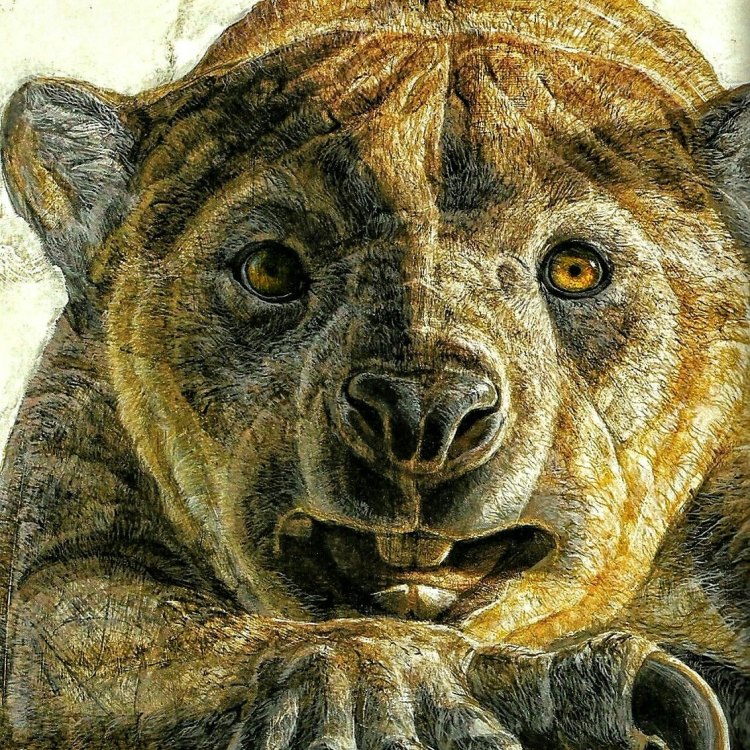
The Mighty Thylacoleo Carnifex: The Fierce Marsupial Lion of Australia
Disclaimer: The content provided is for informational purposes only. We cannot guarantee the accuracy of the information on this page 100%. All information provided here may change without prior notice.



